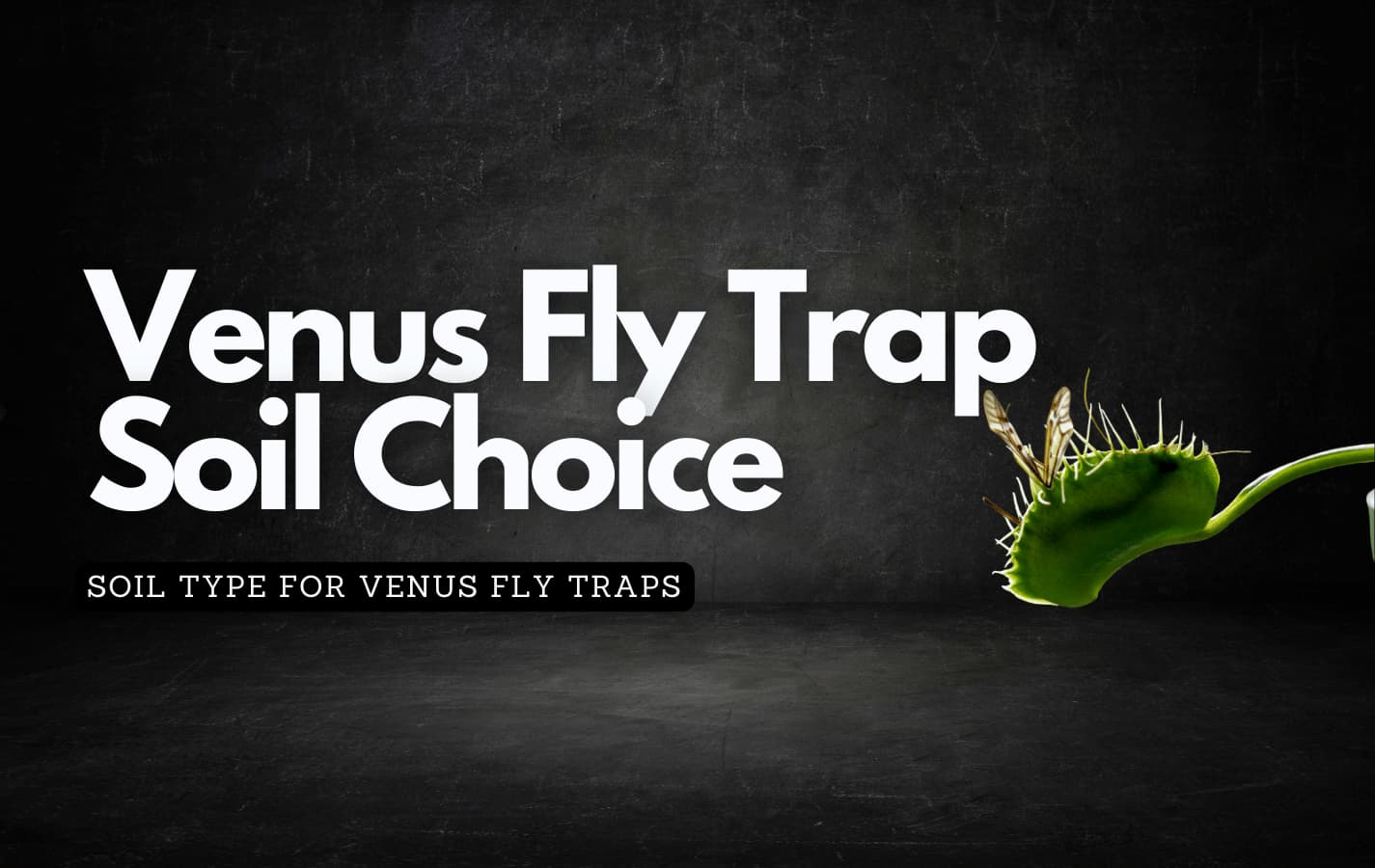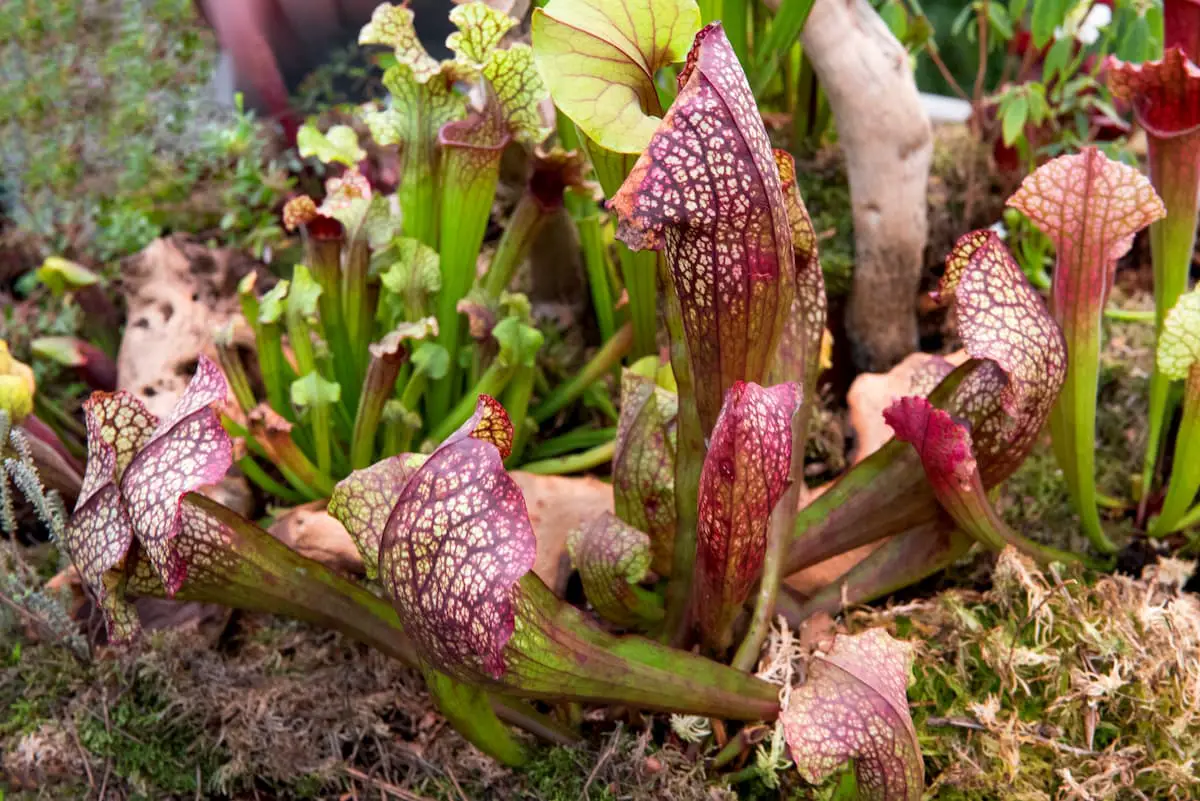If you’re interested in growing Venus fly traps, then it’s essential to know the soil type they thrive in. These carnivorous plants are native to the bogs of North and South Carolina, where they grow in nutrient-poor soils. As a result, they’ve evolved to rely on insects for their necessary nutrients.
The Venus fly trap’s soil needs can be tricky to navigate because they require a specific type of soil that is low in nutrients but high in acidity.
In this article, we’ll discuss the ideal soil type for Venus fly traps and how you can create them at home.
Whether you’re a seasoned plant owner or new to gardening, understanding the right soil conditions for your Venus fly trap is essential for keeping it healthy and thriving.
Natural Habitat Of Venus Fly Traps
The Venus Fly Trap is one of the most fascinating and unique carnivorous plants in the world. It is commonly found in the wilds of North and South Carolina, where it thrives in nutrient-poor soil that is often waterlogged.
Despite its challenging natural habitat, this plant has developed a variety of adaptation strategies to survive.
One of the most striking adaptations of the Venus Fly Trap is its ability to capture insects for food. The plant’s leaves have evolved into specialized traps that snap shut when an insect lands on them, trapping the prey inside.
This allows the plant to supplement its diet with protein and other nutrients that are scarce in its environment.
Another key adaptation strategy of the Venus Fly Trap is its ability to conserve water. The plant’s roots are shallow and spread out widely, allowing it to absorb as much moisture as possible from the damp soil around it.
Additionally, the leaves have developed a waxy coating that helps to prevent excess moisture loss through evaporation.
Given these adaptation strategies, it’s no surprise that Venus Fly Traps have very specific nutritional needs.
To thrive, they require a steady supply of insects or other small prey, which provide essential nutrients like nitrogen and phosphorus.
In the next section, we’ll explore these nutritional needs in more detail and discuss how they impact the cultivation of these fascinating plants.
Nutritional Needs Of Venus Fly Traps
Venus Fly Traps have unique nutritional needs due to their carnivorous nature. In the wild, they obtain most of their nutrients from the insects they capture and consume.
However, when grown in a controlled environment, it is important to provide them with a suitable growing medium that mimics their natural habitat.
The growing medium for Venus Fly Traps should be a mixture of peat moss and perlite or sand. It is important to avoid using regular potting soil as it can retain too much moisture and suffocate the roots. The pH level of the soil should be between 4.5 and 5.5 for optimal growth.
Feeding frequency for Venus Fly Traps depends on several factors such as age, size, and environmental conditions. Generally, they require one insect per week during their active growing season which is spring through fall.
Overfeeding can stress the plant and cause it to die prematurely while underfeeding can stunt its growth. It is important to monitor the health of your plant regularly and adjust feeding frequency accordingly.
To ensure the healthy growth and development of Venus Fly Traps, ideal soil conditions are crucial. In the next section, we will discuss what kind of soil works best for these carnivorous plants and how you can create it at home without any hassle.
Ideal Soil Conditions For Venus Fly Traps
You might be surprised to learn that the Venus Fly Trap, a carnivorous plant known for trapping insects, doesn’t thrive in just any type of soil.
The irony is that this plant prefers soil that lacks nutrients – something you might not expect from a plant that needs to feed on bugs to survive.
One of the most important factors to consider when choosing soil for your Venus Fly Trap is its pH requirements.
These plants prefer an acidic soil with a pH level between 4.5 and 5.5. If the soil is too basic, it can cause damage to the plant’s roots and prevent it from absorbing nutrients properly.
Moisture levels are also crucial in creating the ideal growing conditions for your Venus Fly Trap. These plants need moist soil at all times but not waterlogged.
You can achieve this by using a well-draining mix that allows excess water to escape easily while still retaining enough moisture for the plant’s needs.
To ensure your Venus Fly Trap flourishes, it’s essential to create the perfect soil mix tailored specifically for its unique needs.
In the next section, we’ll explore how you can create an optimal mix of peat moss, sand, and perlite to help your carnivorous plant thrive in its new home.
Creating The Perfect Soil Mix For Your Venus Fly Trap
As discussed in the previous section, ideal soil conditions play a crucial role in the growth and survival of Venus Fly Traps.
One of the critical factors to consider is soil acidity. Venus Fly Traps thrive in acidic soil with a pH range of 4.5 to 5.5. If the soil’s pH level is too high, it can cause nutrient deficiencies and weaken the plant’s health.
Another factor to consider is moisture retention. Venus Fly Traps require moist, well-draining soil to grow healthy roots and facilitate nutrient absorption.
The soil should hold enough water to keep the plant hydrated, but excess water can lead to root rot and damage.
To create the perfect soil mix for your Venus Fly Trap, you need to combine peat moss, perlite or sand, and distilled water.
Peat moss provides acidity and moisture retention while perlite or sand improves drainage by preventing waterlogging.
In summary, Venus Fly Traps require acidic soil with proper moisture retention for optimal growth and health.
By creating a perfect soil mix using peat moss, perlite or sand, and distilled water, you can provide your plant with an environment that supports its unique needs.
Remember to monitor your plant’s condition regularly and adjust its growing conditions as needed for maximum productivity!
Frequently Asked Questions
Can I Grow Venus Fly Traps In Water Instead Of Soil?
Growing hydroponic Venus fly traps is a possibility, but it’s important to consider the benefits of using soil for these plants first.
While it may seem easier to grow them in water, soil provides essential nutrients and a stable environment that can lead to healthier and more robust growth.
Although there are methods for hydroponic growing, many gardeners still prefer the traditional approach of using soil.
Ultimately, it’s up to the gardener to decide which method works best for their specific needs and preferences.
How Often Should I Water My Venus Fly Trap?
When it comes to watering your Venus fly trap, it’s important to keep in mind the frequency and soil moisture.
These carnivorous plants require consistent moisture in their soil, which means they should be watered regularly but not too often.
As a general rule of thumb, you should aim to keep the soil damp but not saturated.
This typically means watering your plant once or twice a week during the growing season, and less frequently during the dormant period.
However, it’s important to adjust your watering frequency based on factors such as temperature and humidity levels, as these can impact how quickly the soil dries out.
By paying attention to your plant’s needs and adjusting accordingly, you can help ensure that your Venus fly trap stays healthy and happy for years to come.
Can I Use Regular Potting Soil For My Venus Fly Trap?
The Venus fly trap is a fascinating plant that captivates many with its unique abilities.
When it comes to caring for this plant, soil is an important factor to consider.
While regular potting soil may seem like a viable option, it’s not suitable for the Venus fly trap.
This plant requires soil that is acidic in nature, and using alternatives such as peat moss or sphagnum moss can better cater to its needs.
It’s essential to understand the importance of soil acidity for the Venus fly trap as it directly impacts its growth and overall health.
So choose your soil wisely, and watch your Venus fly trap thrive in its new home.
Do Venus Fly Traps Require Any Fertilizers?
Venus fly traps do not require any fertilizers as they are naturally adapted to thrive in nutrient-poor soils. They obtain their nutrients from the insects they catch and digest.
Using synthetic fertilizers can actually harm the plant and even kill it, so it is important to avoid them.
However, if you want to supplement the natural nutrients in the soil, you can use organic matter such as sphagnum moss or peat moss to improve soil quality.
It is essential to remember that Venus fly traps need a specific type of soil that is low in minerals and high in acidity, so make sure to use a suitable soil mix for optimal growth.
How Can I Tell If My Venus Fly Trap Is Getting Enough Sunlight?
To ensure that your Venus fly trap gets enough sunlight, you can measure the amount of light it receives using a lux meter.
It’s important to provide proper lighting for your plant as it plays a crucial role in its growth and development.
Without enough light, the leaves may become weak and start drooping. On the other hand, too much light can cause burning or bleaching of the leaves.
Therefore, it’s essential to find the right balance and provide your Venus fly trap with adequate sunlight.
Conclusion
In conclusion, growing a Venus Fly Trap requires specific care to ensure its survival.
While you may be tempted to grow it in water, this carnivorous plant thrives in a soil mixture of sphagnum moss and perlite.
Overwatering can harm the plant’s health, so it’s essential to monitor its moisture levels and only water when the soil is dry.
Additionally, while regular potting soil may seem like a suitable substitute, it lacks the necessary nutrients and pH levels for the Venus Fly Trap.
Finally, ensuring that the plant receives adequate sunlight is crucial for its growth and development.
Remember to remember these tips when caring for your Venus Fly Trap!




Leave a Reply